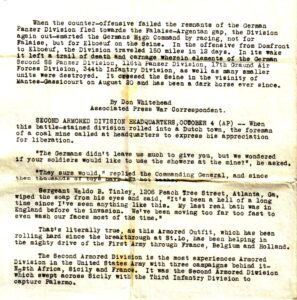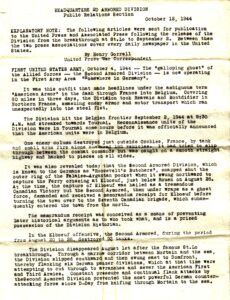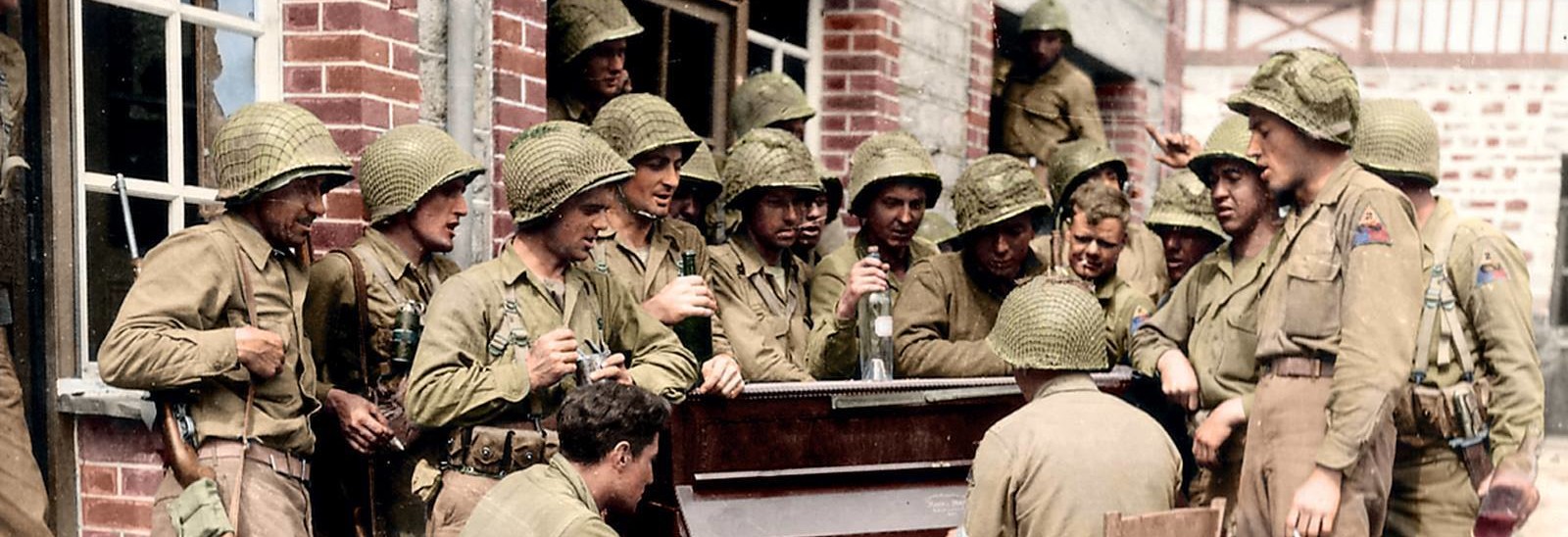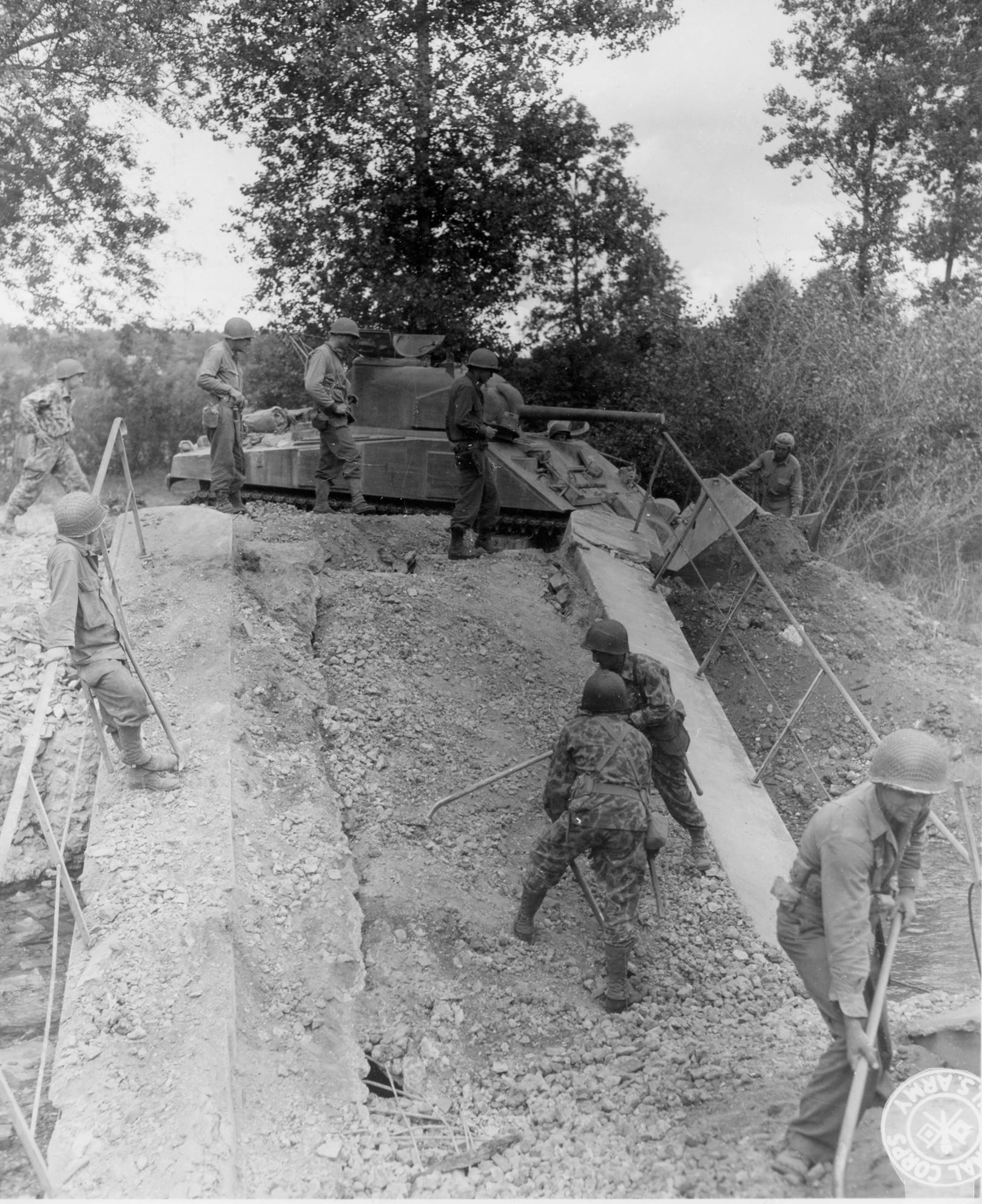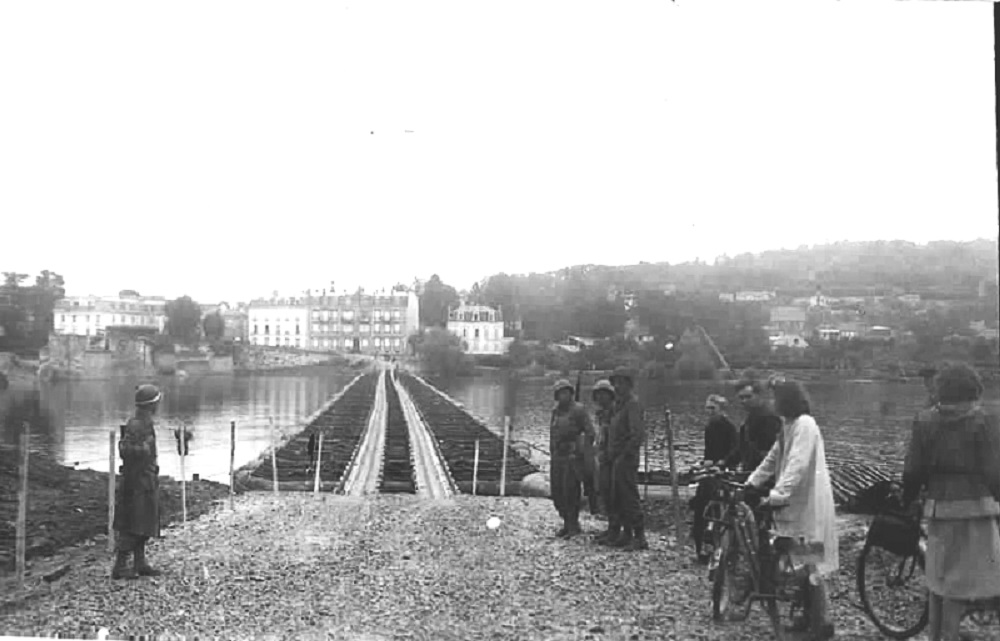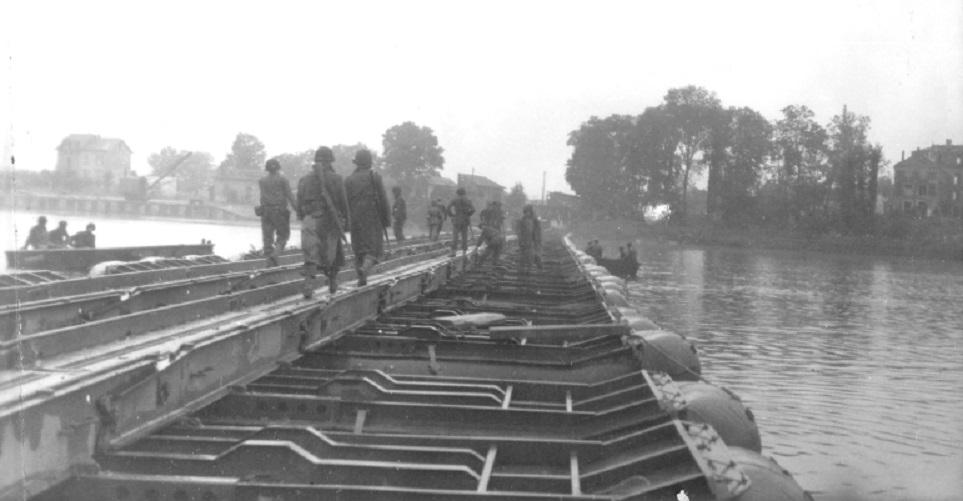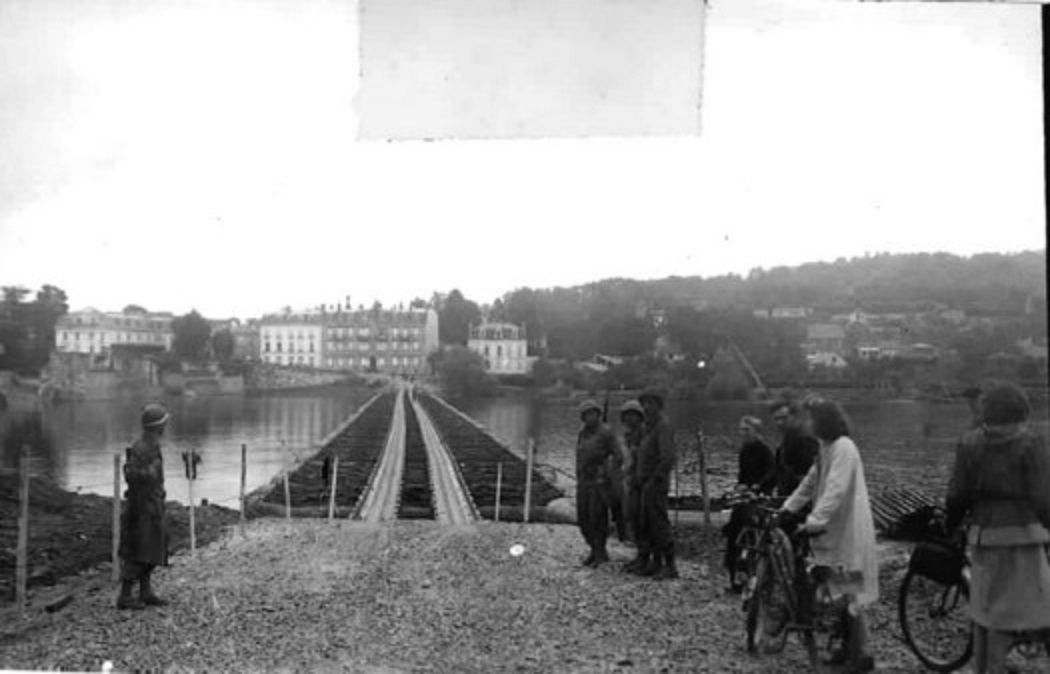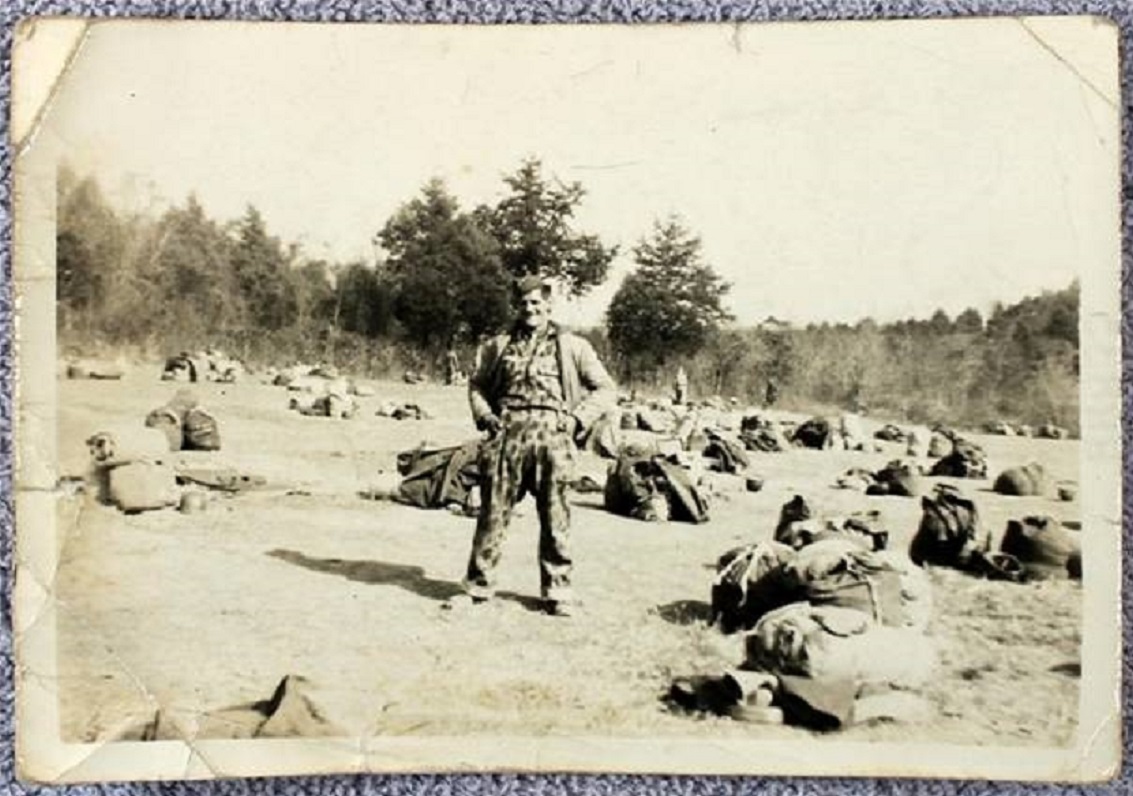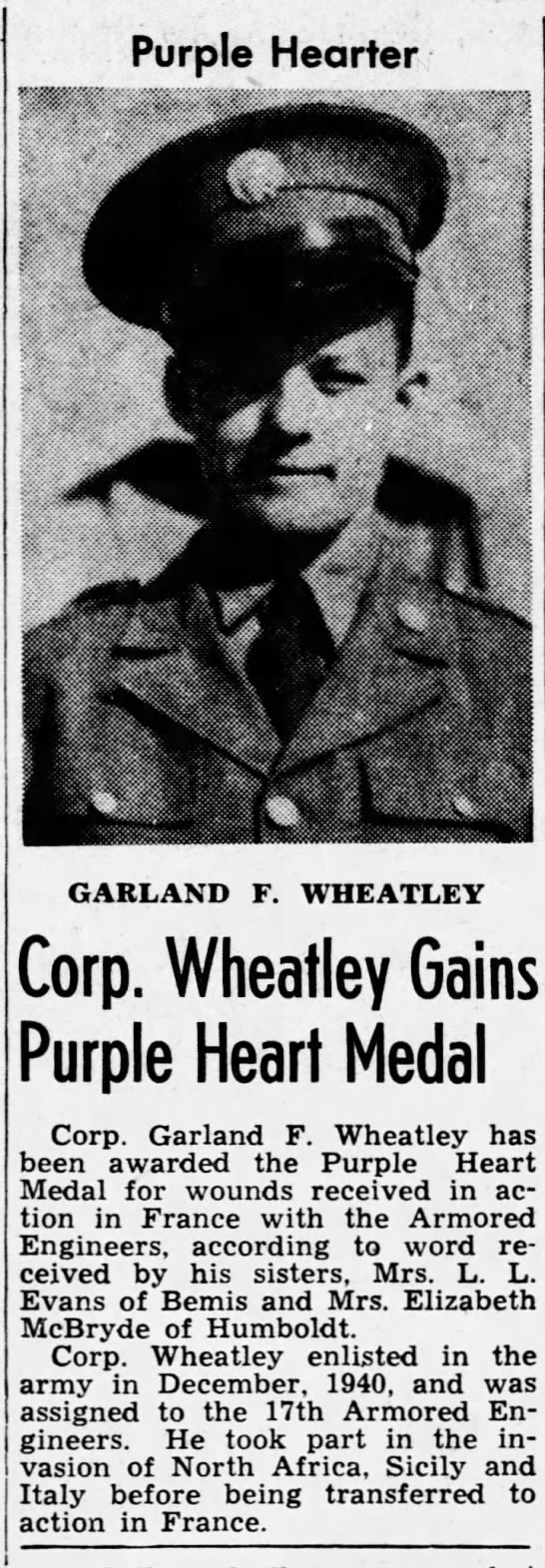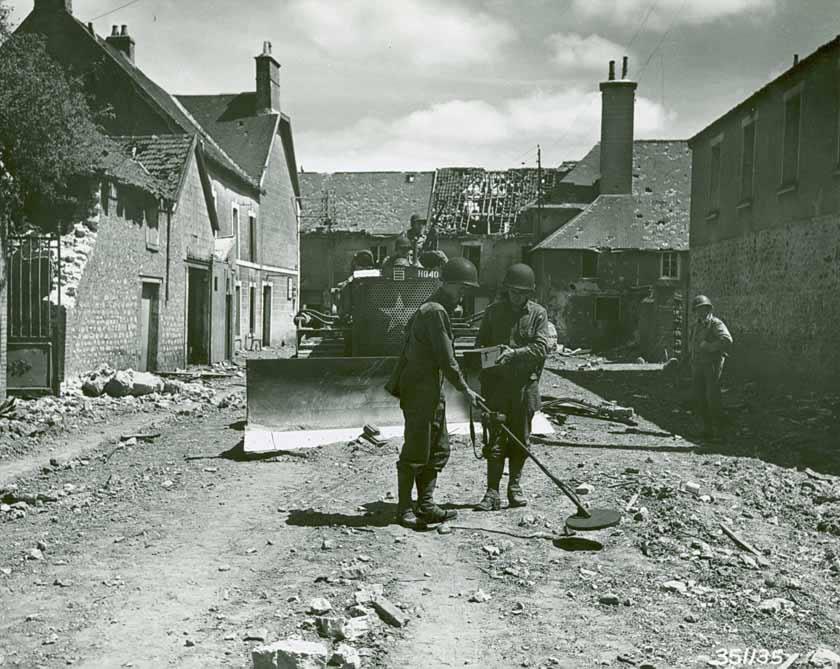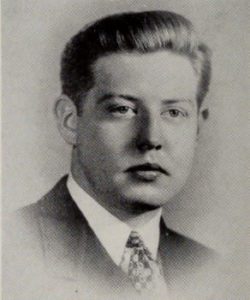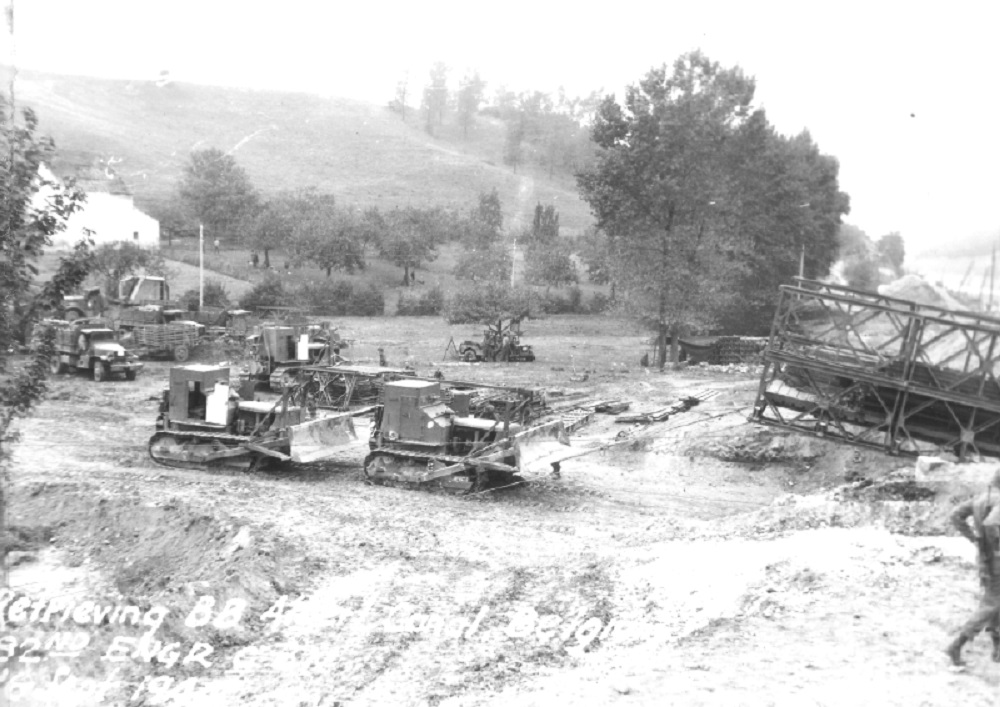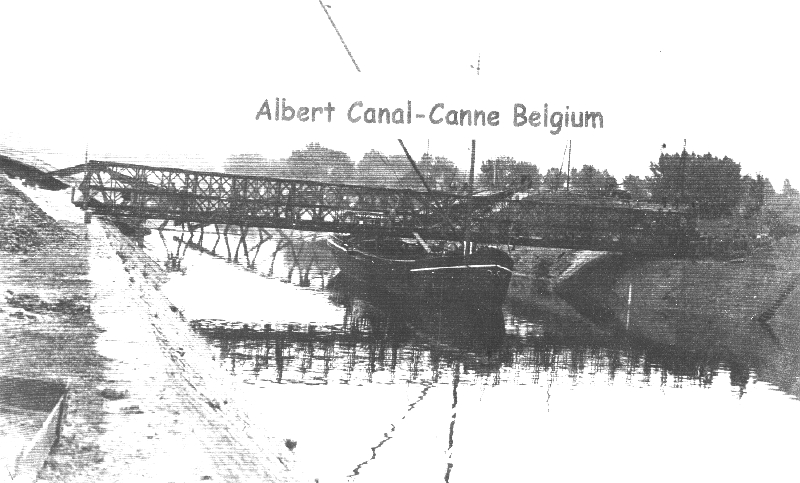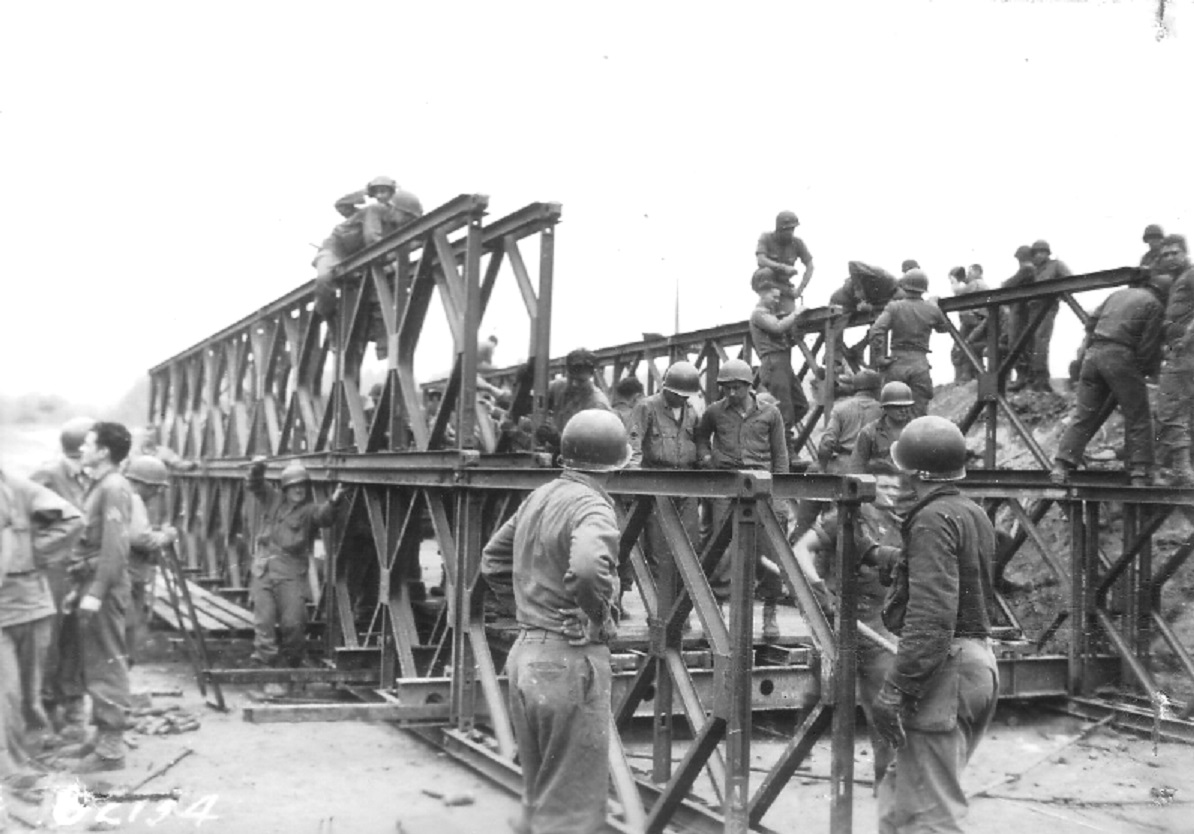The division pulled south of Barenton to reassemble for the next operation during 16 and 17 August. The Battalion moved out again on 18 August Co. ”A” with CC ”A”, Co. ”B” with CC ”B”, Co. ”D” with the 82nd Rcn, Co. ”E” with Div Tns, and Co. ”C” attached to the remainder of the Bn. under Divisional Reserve. The advance led through Domfront, Sees, Verneuil and on to Elbeuf where there was tough fighting 22 to 26 August. Co. ”D” in skirmishes while out obtaining information about enemy dispositions took 12 prisoners.
(Edit1 : Private Lawrence P Woodside was killed in Action)
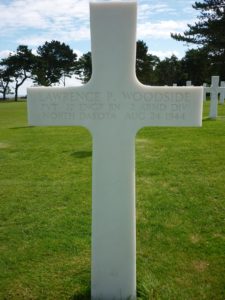
Three treadway bridges were built, one by Co. ”A”, one by Co. ”E”, and one by the Rcn Platoon, to support the advance. Co. ”C” worked with the 99th Inf. Bn. and the 702nd TDs. in setting up road blocks at the towns where the column bivouacked. However, most of the troops were engaged in the long marches, from one orchard bivouac to the other, where the first soldiers to arrive could get wine and eggs with the exchange of handbook French and a GI smile.
Again in 27 August the Battalion moved, going to Pacy sur Eure, where a couple of days were spend re-equipping. Co. ”E” in conjunction with the 82nd Engr. (C) Bn. constructed a 720 foot floating treadway bridge across the Seine at Meulan-en-Yvelines 29 August.
01-2021
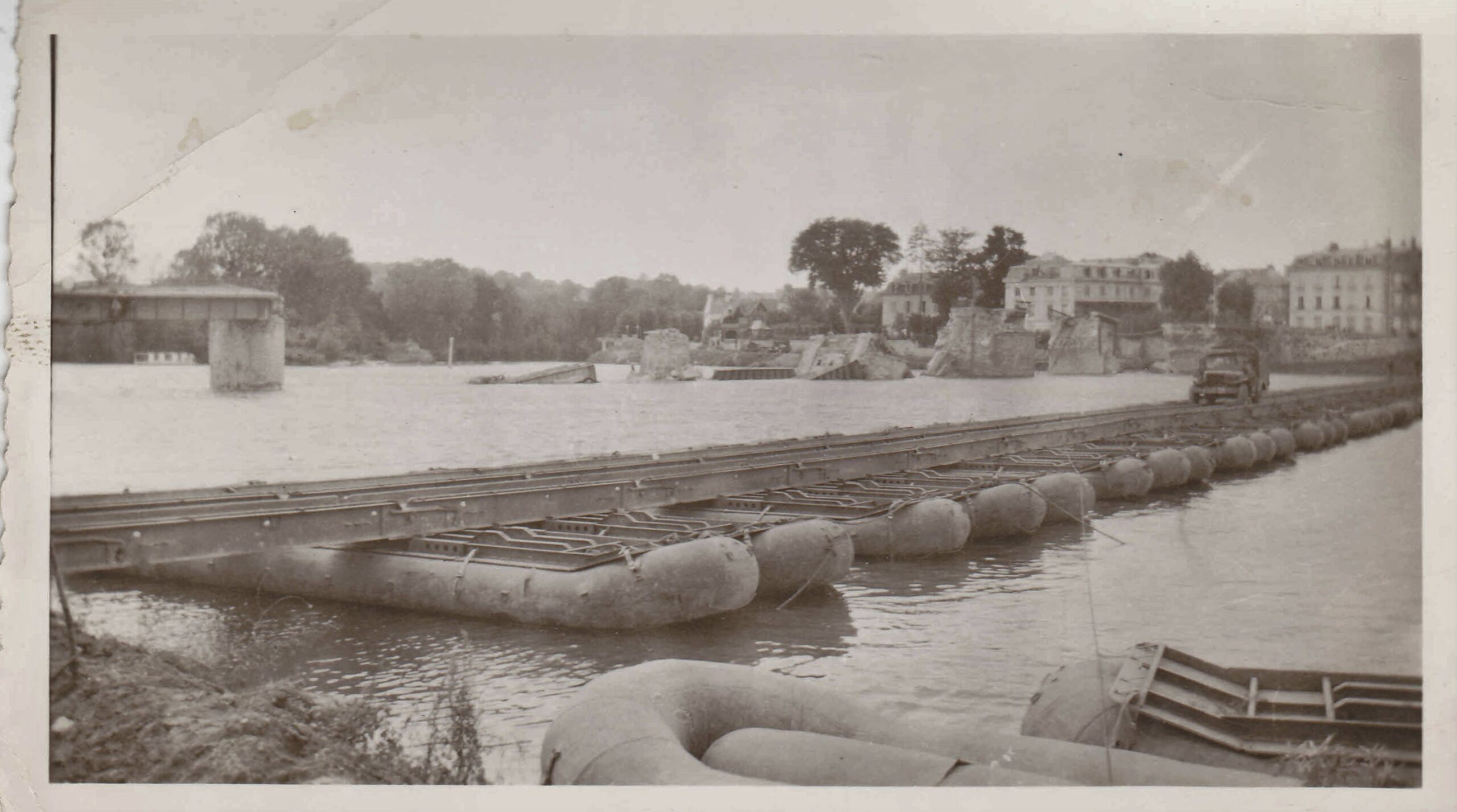
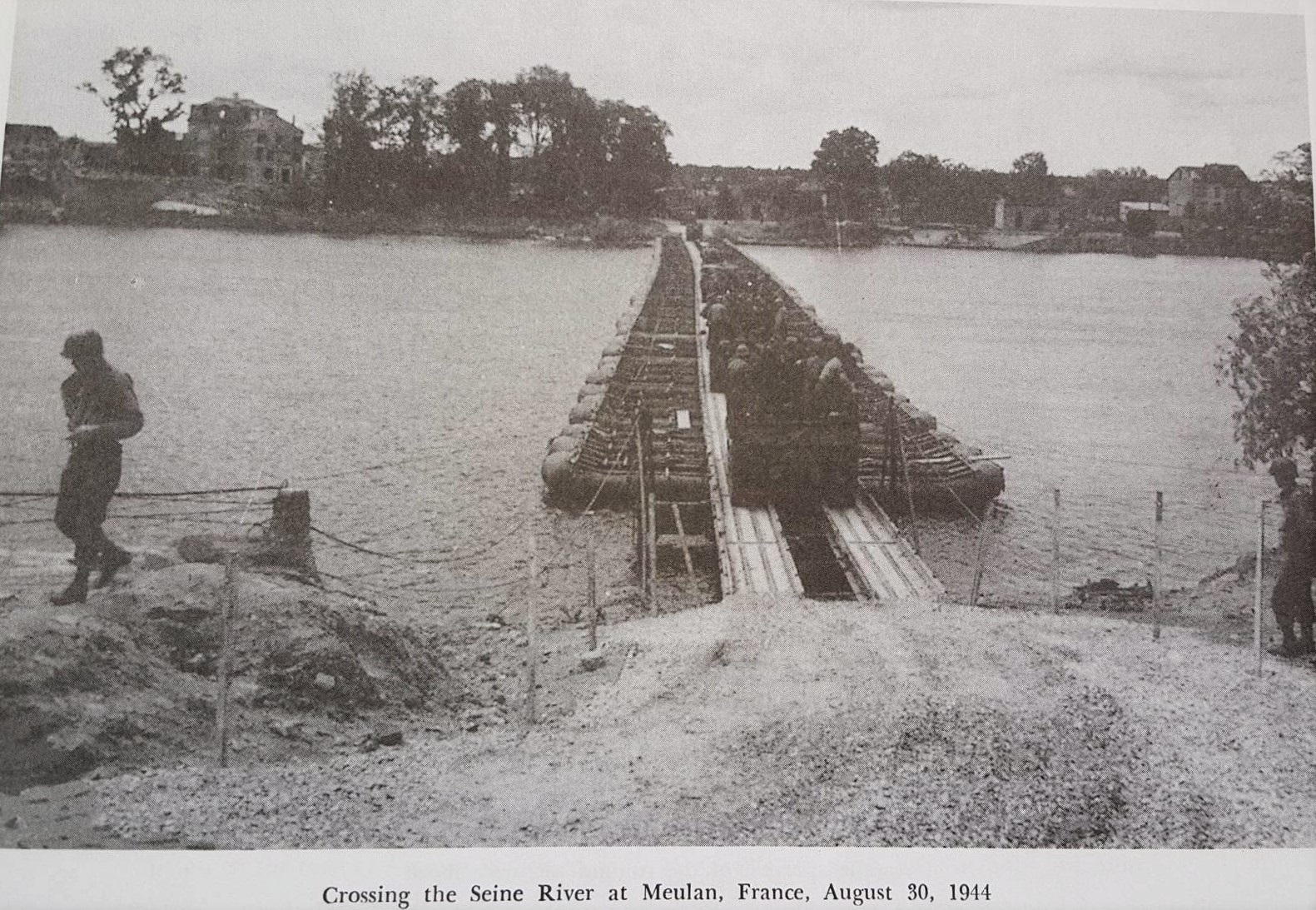
Read more about the bridge crossing here: M2 Treadway bridge across “the Seine at Meulan, France august 28-30 august 1944
The Battalion advanced again 30 August crossing the Seine at Rosney and marched rapidly to the northeast passing near Beauvais, Bretueil, Amiens and Cambrai. Near Bray, France Hq. and and Co. ”C” had some excitement when a column of Germans attempted to break through their bivouac at night. Bullets were flying everywhere. The 1st Platoon of Co. ”C” were on outpost with 1/66, part ot the men were over-run, captured by the retreating Germans, made their getaway, were again captured by another German group and then succeeded in getting away the second time as they ran into another U.S. force. The outpost was credited with killing a large number of the enemy. On this same day, Sept. 1, Co. ”B” built a 30 foot treadway bridge across the Somme near Eclusier and captured two prisoners. Further back, Co. ”E” took up its bridge across the Seine.
10-2020
Video: 2ND ARMORED DIV ADVANCE, Belgium; 6 Sept 1944 Vehicles of US 2nd Armored Div move thru Soignes. Belgium
Purple Hearter
GARLAND F. WHEATLEY
Corp. Wheatley Gains Purple Heart Medal
Corp. Garland F. Wheatley has been awarded the Purple Heart Medal for wounds received in ac-tion in France with the Armored Engineers, according to word re-ceived by his sisters, Mrs. L. L. Evans of Bemis and Mrs. Elizabeth McBryde of Humboldt. Corp. Wheatley enlisted in the army in December. 1940, and was assigned to the 17th Armored En-gineers. He took part in the in-vasion of North Africa, Sicily and Italy before being transferred to action in France.
(Transcribed: Martijn Brandjes)
On the 2nd of Sept. at 2200 Co. ”A” crossed the border into Belgium and went into an assembly area at Bercu, putting the platoons on outpost, Co. ”D” crossed the border on the same day, moving into La Glanene. Hq and Co. ”C”, however, were in the column that moved into Orchies, just below the border, on that day. Here occurred the action that was typical – if on a large scale – of the type fighting that was occurring as the German columns and our own were racing to the North, one fleeing to escape, our own advancing as rapidly as possible, and with neither side in full knowledge of the exact location of the other. Our own column had advanced trough Marchiennes and the head of it was Orchies, when a German column cut through the middle and headed up a parallel road. All combat elements went into firing positions hurriedly, including the Rcn platoon and the 57mm gun crew of Hq, and the enemy slaughter was almost complete with no casualties on our side. Afterwards, the area was consolidated with Engineer platoons putting in and manning road blocks. From 3 to 5 Sept. the troops with Bn. Hq. were at Mouchin, France, Performing maintenance. Co. ”B” during this period was at Pecquencourt. The troops with CC. ”B” crossed the Belgian border 7 august, Co. ”B” moving in the direction of Stevortschen where it arrived 12 August. Bn. Hq. and Co. ”C” had crossed into Belgium 6 august moving to Wavre. On 7 Sept. the Rcn Platoon constructed a 45 foot trestle bridge near Jodignes, and Co. ”A” put in two treadway bridges, one of 30 feet length and one 45 feet long.
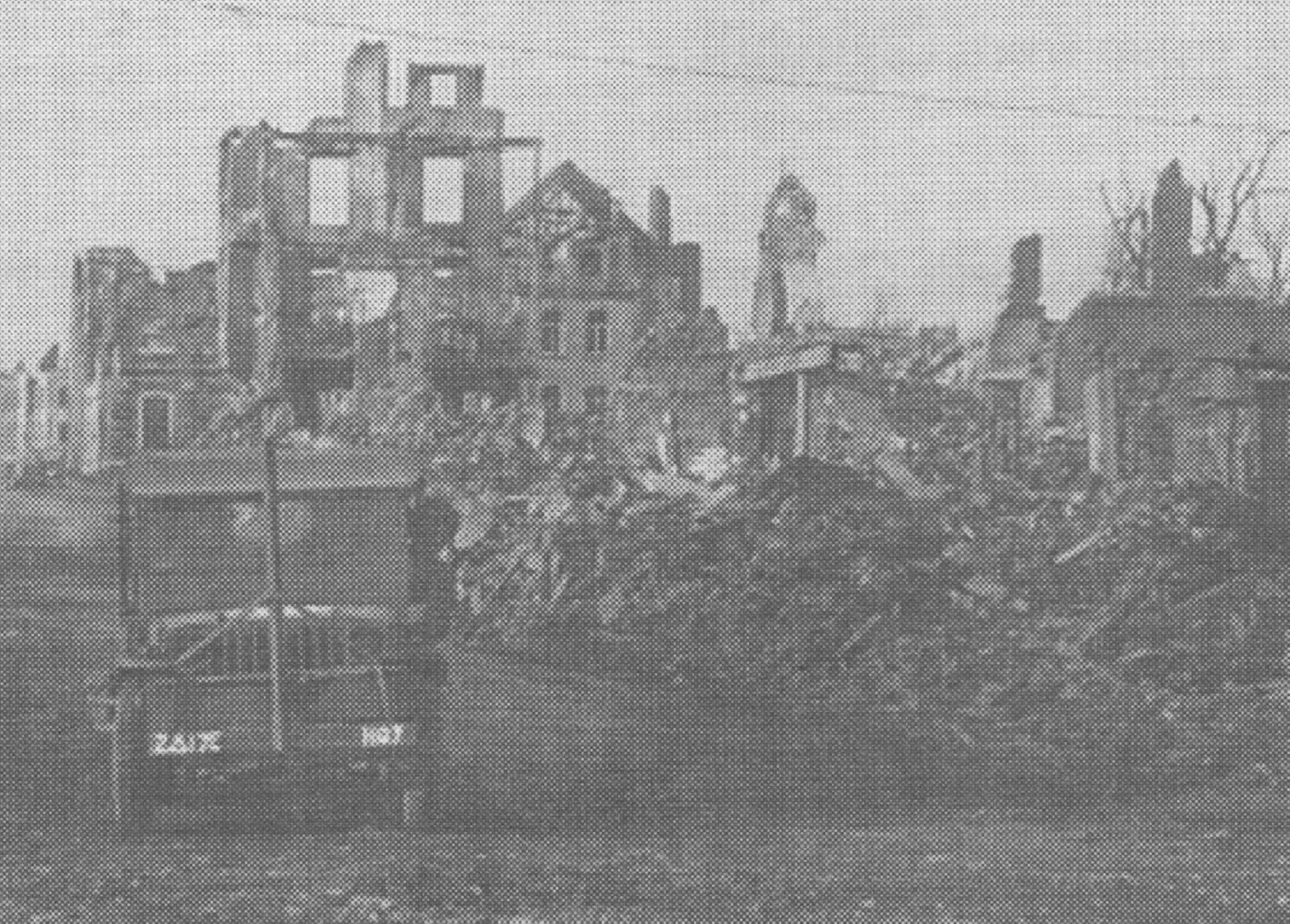
It was during these days through northern France and Belgium that the men in columns wewre given the wild acclaim of the liberated peoples. The dusty roads dirtied the faces of men in halftracks, trucks and jeeps, but as their vehicles rolled through or paused in small villages, the civilians waved joyously, climed on the vehicles to shake hands, to kiss or touch, and to press gifts of fruit or wine or bread or eggs or anything else they might think the soldiers would like. All vehicles were gay with flowers, and finally the rule was passed out to unload these on the outskirts of town, which also was a good plase to throw out the green apples that had been accumulated.
Little opposition was encountered the fist days in Belgium and the columns advanced and captured Hasselt.
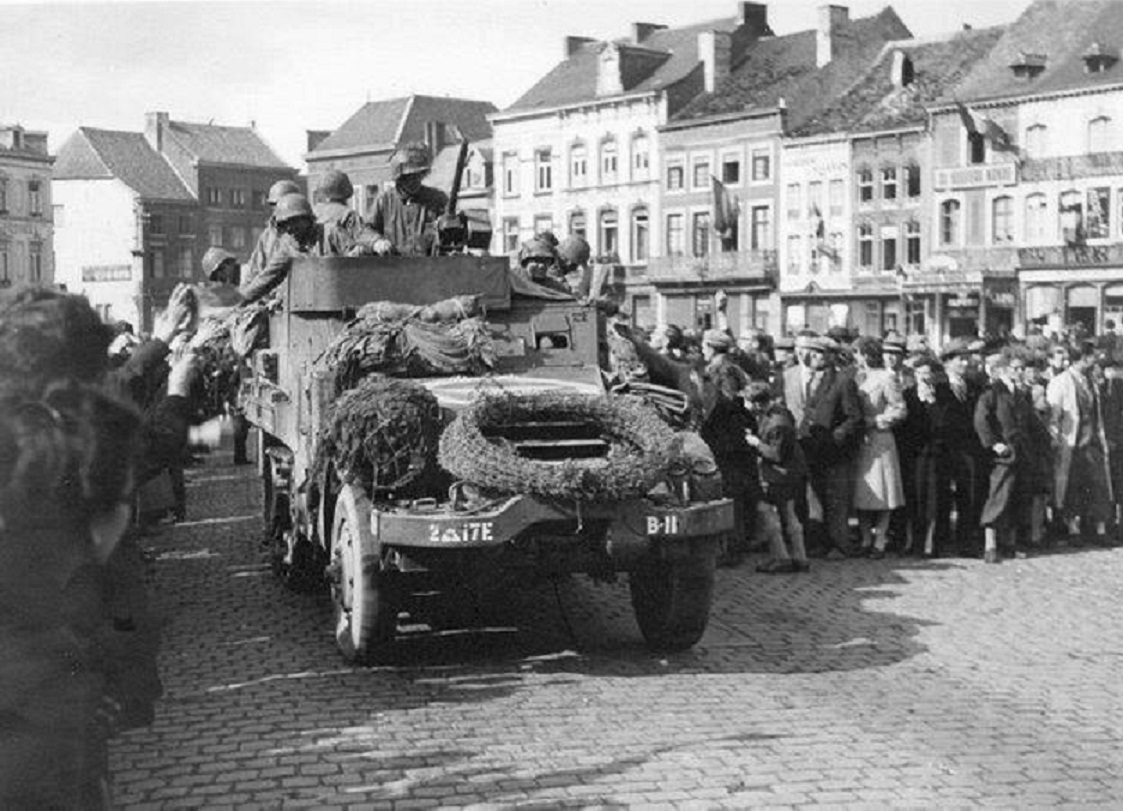
Current location: at the “Marktplein” St Trond, Belgium
10-2020
Video: 2nd Armored Division Honored by the Belgiums at Hasselt, Belgium
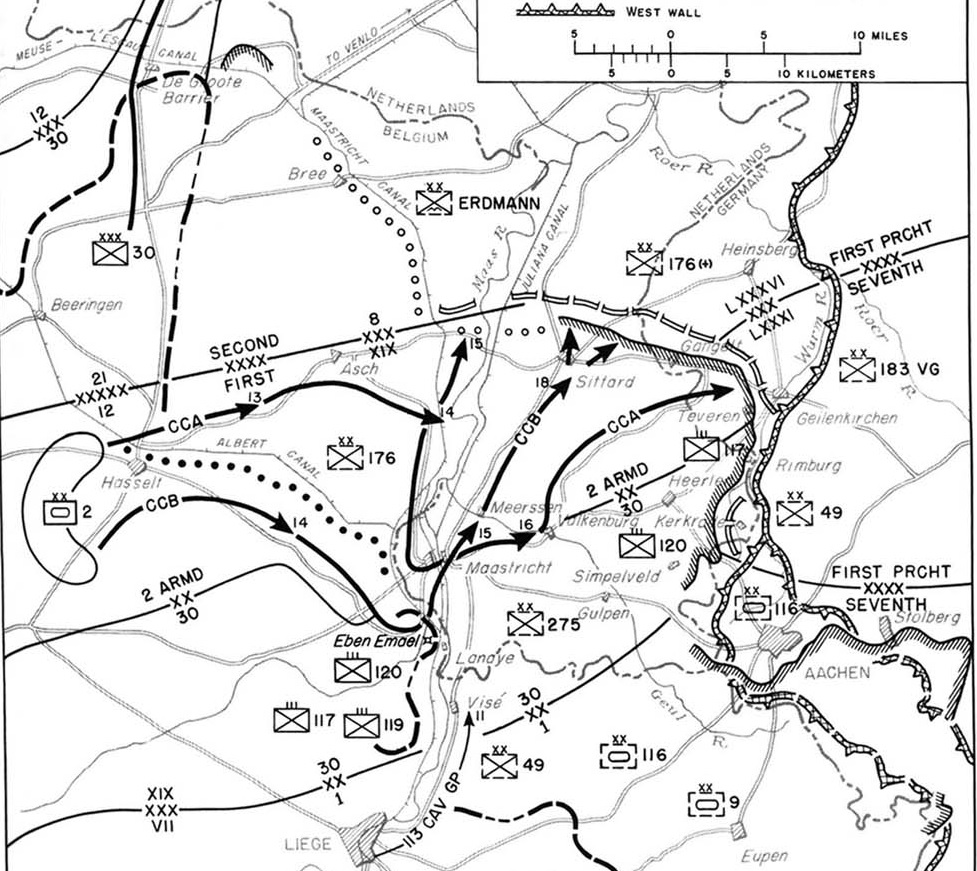
Bridge at Albert Canal at Canne and Hasselt, Belgium (source historyarmymil.com)
Part of the 82nd Rcn Bn. crossed the Albert Canal to the east and required a bridge in the division sector for operational needs. The Engr. Bn. Hq. And Col. ”C” had moved into a wooded area southeast of Hasselt 9 September. Co. ”C” was given the job of bridging the canal, Co. ”E” moved its equipment near the bridge site, and on 12 Sept. Capt. Novonty and all three platoons of Co. ”C” constructed a 130 foot thread way over the canal northeast of Hasselt in two hours working time. The bridge was left in for two days, when orders came to send the equipment to the 1104th Engr. Group to make a crossing of the Meuse River at Maastricht, Holland. So on 14 September the Bn. (-) moved to an area northeast of Tongres, Belgium, and Co. ”E” with some assistance from the 246th Engr. (C) Bn. built a 600 foot, 50 percent reinforced floating bridge across the Meuse in Maastricht.
01-2021
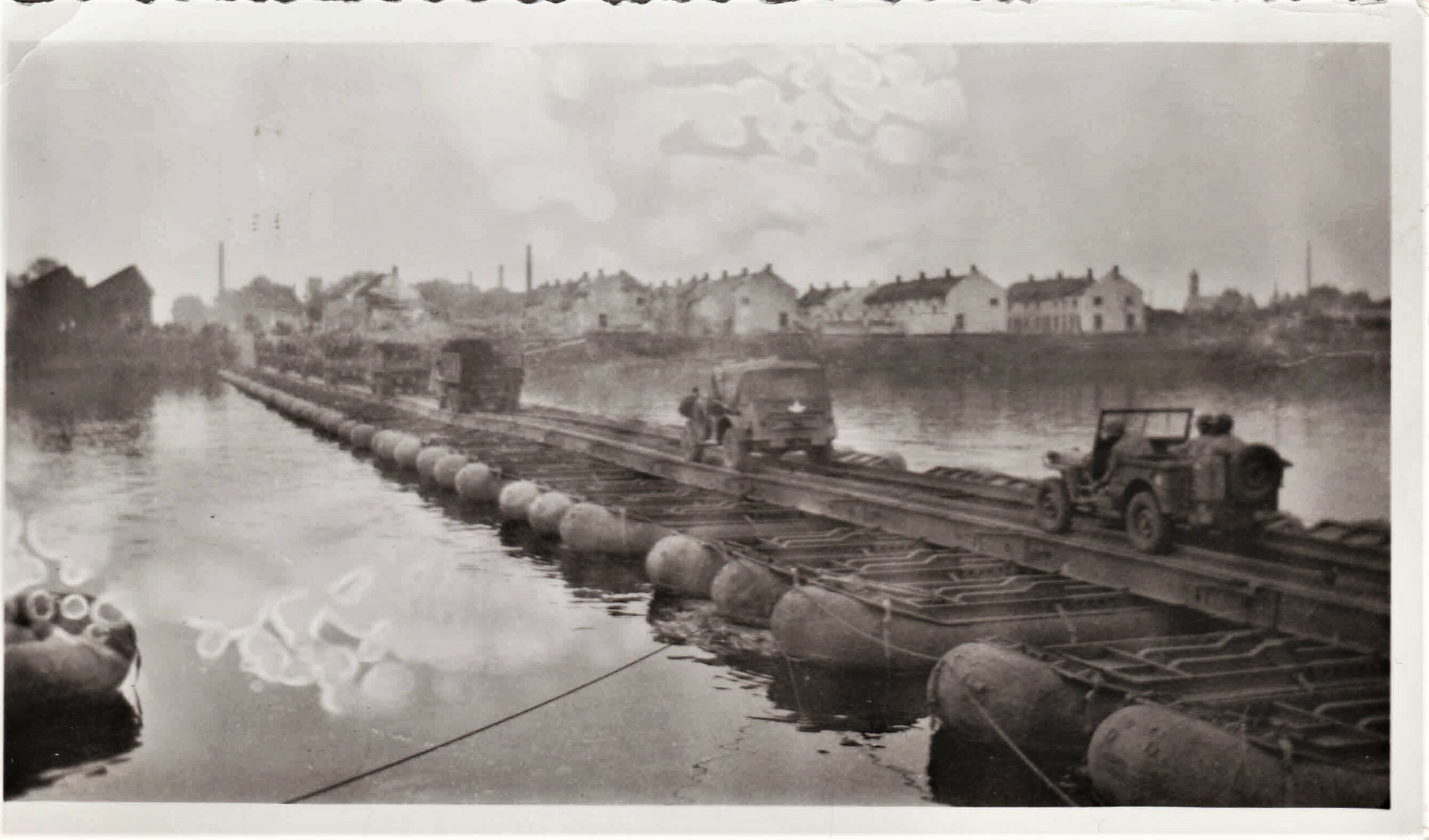
The next day, at Canne where a DD Bailey Bridge had collapsed during construction, the same units combined to erect a 135 foot treadway over the Albert Canal. It was on this same day that 1st Lt. Crimmins, CO of Co. ”A”, was killed by a sniper while making a reconnaissance of the canal north of Maastricht, and 1st Lt. Clyde Loyd was detached from Co. ”C” and placed in command of Co. ”A”.
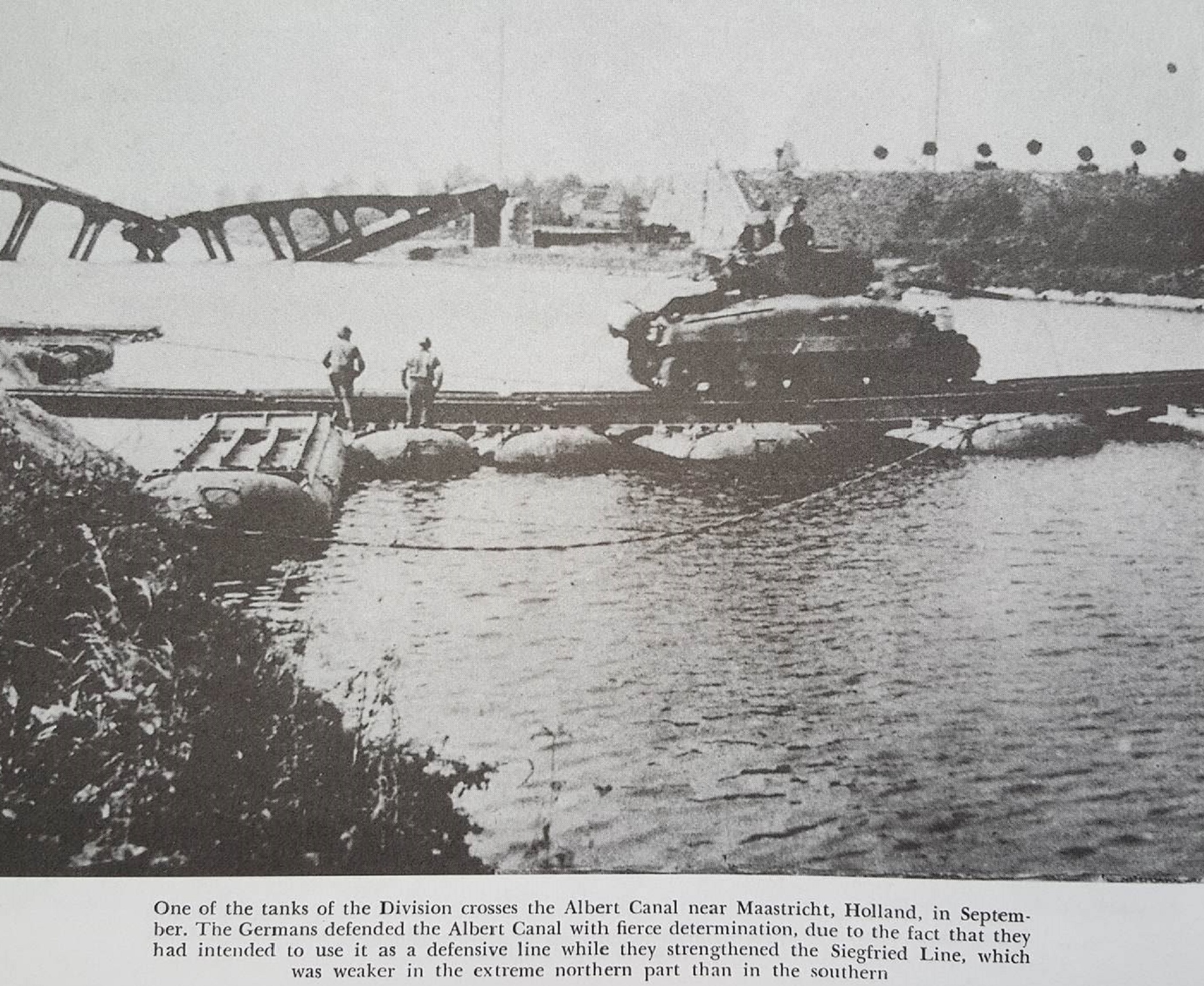
Read more here about: Treadway bridge across the “Albert Canal”, at Hasselt, Belgium on Sept 12, 1944
(Edit 1: Gravestone of First Lieutenant Francis Joseph Crimmins who was killed by a sniper on September 15, 1944)
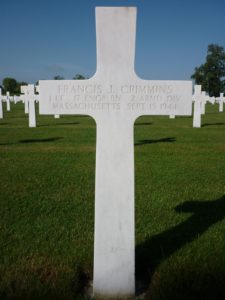
140 DD Bailey bridge across the “Albert Canal”, at Canne, Belgium on Sept 15, 1944
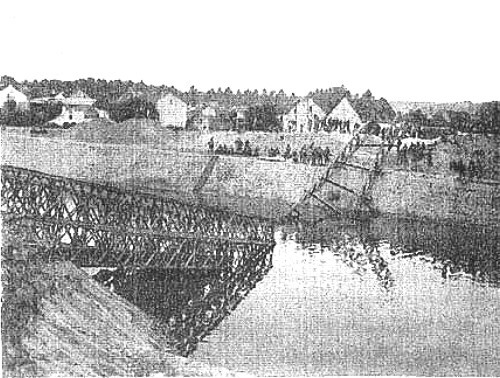
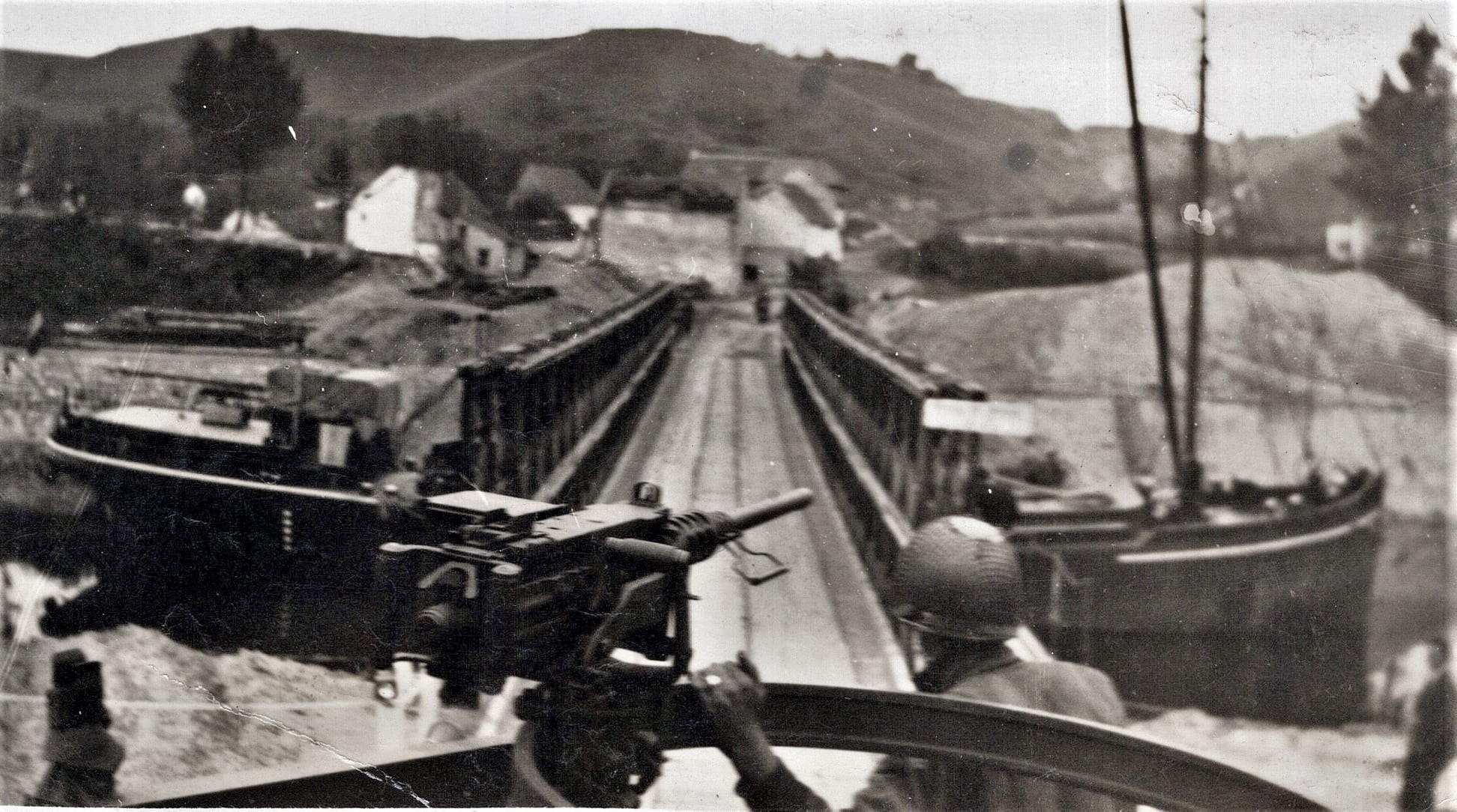
Read more here about: 140 DD Bailey bridge across the “Albert Canal”, at Canne, Belgium on Sept 15, 1944
17th Engineer Private Chester L. Patcyk “Corrected Notification 25 September 1944”
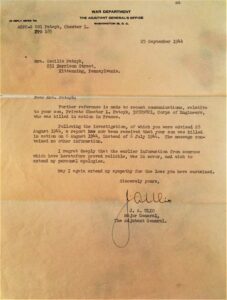
War Department
The adjudant Generals Office
Washington D.C.AGPC-G 201 Patcyk, Chester L.
ETO18525 September 1944
Mrs. Cecilia Patcyk,
231 Harrsion Street,
Kittanning, Pennsylvania.Dear Mrs. Patcyk,
Further reference is made to recent Communications, relative to your son, Private Chester L. Patcyk 32729821, Corps of Engineers, who was killed in action in France.
Following the investigation, of wich you were adviced 28 August 1944, a report has now been received that your son was killed in action on 6 august 1944, instead of 6 july 1944. The message contained no other information.
I regret deeply that he earlier information from sources which have heretofore proved reliable, was in error, and wish to extend my personal apologies.
May I agian extend my sympathy for the loss you have sustained.
Sincerely yours,
J. A. Ulio
Major General,
The adjudant General.
